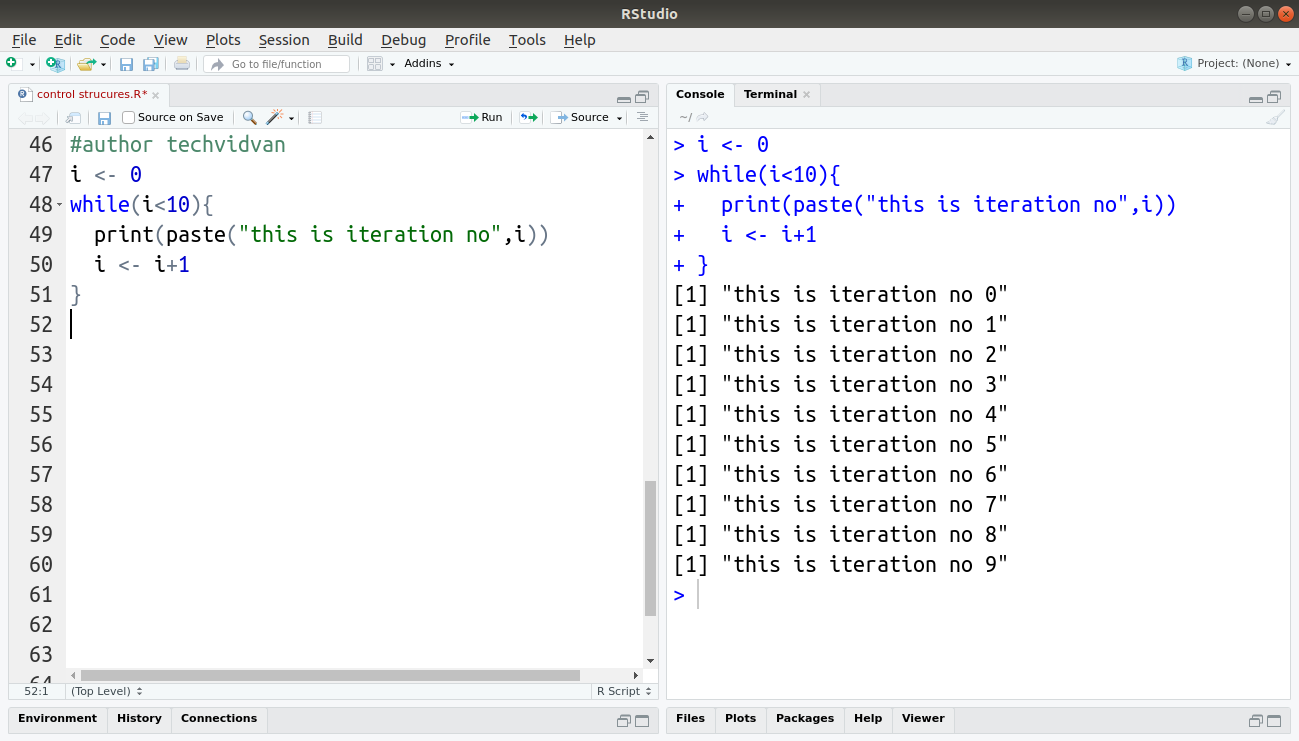

I'm writing a book about graphic design and how it relates to software development! If you're interested, sign up here for updates.Parallel computing is easy to use in R thanks to packages like doParallel. If you have any additional info share, please drop it in the comments below! Had I known remembered that you can't break out of a forEach loop, things probably would have turned out different 🤷🏼♂️. In the case of my interview, I was using the right tool, the wrong way.
Foreach loop in r code#
Generally speaking, you can refactor your code to death, but then you're just wasting time you could be building stuff. The number of options may seem a bit overwhelming at first, but I like to take the approach of: "if it works, it's the right tool." The biggest difference between the two is that map will return a new Array, while a forEach() won't.Īs mentioned earlier by the incredibly sassy MDN docs, choosing the right tool is paramount to success. Likely, the most common array methods that appear in tutorials are forEach() and map(). They all have different purposes and I'd recommend looking into each one. There are quite a few different types of loops.

Be aware, that is not the case for some of the other Array Methods.Īdditionally, because of this, break or continue are not valid statements. In the case of the forEach() function, it doesn't do anything with the returned code. This finally brings us to the answer to our question, why can't we break out of a forEach() loop? It's because the loop is running that callback function over every item, so even if you write a return it's only returning on that instance of the function. For an array of such a small size, I doubt that it will make much of a performance difference. The only difference is it keeps running until it reaches the end of the jedis array. Our solution essentially does the same thing.

Our data again, for reference const jedis = const sith = // start our loop, define our iterator variable for ( let i = 0 i < jedis. Here is the data we are going to compare: Here is the problem:Ĭompare two arrays and see if the items in them are the same. Repeating the same code over and over (on loop) until we reach a defined end state.įor the sake of comparison, we're going to solve the same problem using the various loop types. However, they are right, knowing which tool to choose is important.īefore we get too deep into why you can't break out of a forEach(), let's examine what a loop even is and where forEach() came from.Ī loop in programming solves a pretty common problem: I need to run the same code against all this data. That's some hardcore sass coming from the MDN docs. If you need such behavior, the forEach() method is the wrong tool There is no way to stop or break a forEach() loop other than by throwing an exception. If you prefer to watch than read, check out the video version of this! After you read this, hopefully, you won't make the same mistake I did! Don't be like me. I had forgotten that little tidbit and it probably screwed up my chances of getting hired. The details of it aren't that important, but one thing that came out of it (in the middle of the interview) was that you can't break out of a forEach() loop. I recently had a coding interview that involved evaluating one schema against another.


 0 kommentar(er)
0 kommentar(er)
